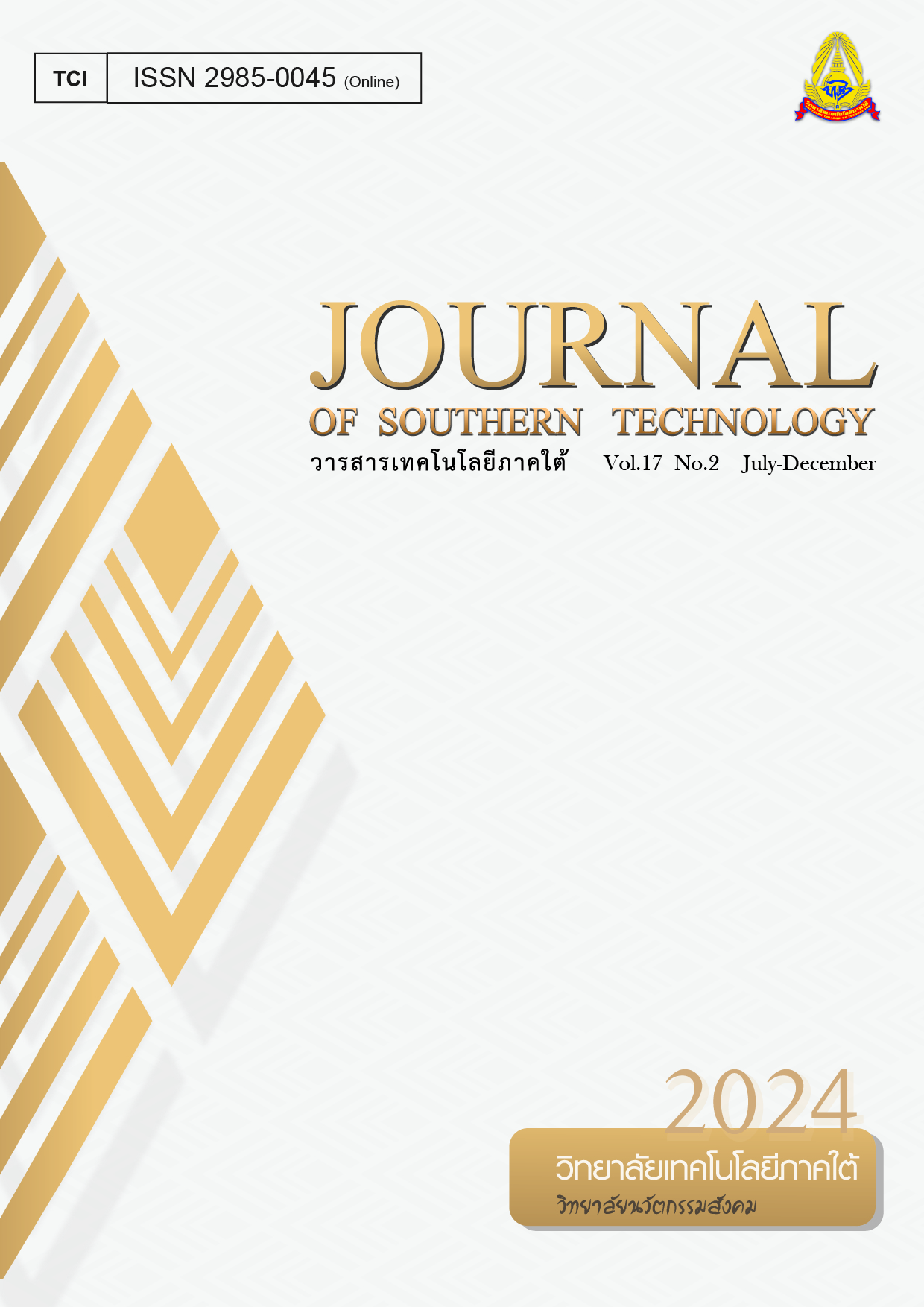Statistical Analysis for Learning and Test-taking Behaviors in Basic Statistic Business and Application Course
Main Article Content
Abstract
Learning behavior is key to academic success, particularly in hybrid learning systems that rely on technology for learning, research, and communication. These factors lead to varied learning behaviors among students. This study aims to: 1) investigate learning behaviors from subjective homework using Two-Step Cluster analysis, 2) analyze the differences in learning success across different learning behavior groups using the Kruskal-Wallis test, 3) analyze academic achievement from tests and final exam scores for each learning behavior group using the Mann-Whitney U Test, and 4) examine the correlation between multiple-choice and subjective final exam scores related to learning behaviors and test-taking using Pearson's Correlation Coefficient. The sample consisted of 129 students enrolled in the Basic Statistics for Business and Applications course at Prince of Songkla University in the first semester of the academic year 1/2022. The findings revealed that: 1) learning behaviors could be categorized into six groups: those who did not do homework, those who studied alone, in pairs, in small groups, in medium-sized groups, and in large groups; 2) the Kruskal-Wallis Test showed significant differences in learning success among the groups at the .05 significance level (χ2 = 40.23, df = 5, p < .05); the Mann-Whitney U test at a significance level of .05 revealed that students who did not do homework had significantly different success levels compared to other groups (4≤U≤13, p < .05), with the lowest success level while the large groups had the highest success level, which was not significantly different from the pair studying group (U = 226); 3) academic achievement from test and final exam scores showed that all groups had lower final exam scores compared to test scores. Meanwhile the paired t-test showed no significant difference between test and final exam scores for students who did not do homework, studied in pairs, and studied in small groups (t=1.62, 0.00, and 1.71 respectively) while other groups had significantly higher quiz scores than final exam scores at the .05 level; and 4) the Pearson's Correlation Coefficient showed no correlation between multiple-choice and subjective exam scores in all groups, with coefficients ranging from -0.30 to 0.40, indicating that good performance in multiple-choice exams does not necessarily correlate with good performance in subjective exams.
Article Details

This work is licensed under a Creative Commons Attribution-NonCommercial-NoDerivatives 4.0 International License.
-
Authors must agree to the journal publication rules and allow the editors to edit the manuscripts for publication.
-
Author’s right belongs to the author but Journal of Southern Technology holds the right of first publication and thus allow readers to use the article for the purpose of education but not commercial.
References
Chairuk, S. (2017). The study of behavior of sharing knowledge and learning achievement of first year certificate students of electronics major taught by cooperative learning. Vocational Education Central Region Journal, 1(1), 54-61. [in Thai].
Conover, W. J. (1999). Practical Nonparametric Statistics (3rd ed.). New York: John Wiley & Sons, Inc.
Cox, D. R. (2006). Principles of Statistics Inference. New York: Cambridge University Press. Emyuak, S. (2015). The Learning Behavioral and Effectiveness Development of Students in IS345 Management of Information Center by the Active Learning Technique. Pibulsongkram Rajabhat University. http://ethesis.psru.ac.th/lib-irpsru/sites/default/files. [in Thai].
Hair, J. F., Jr., Black, W. C., Babin, B. J., & Anderson, R. E. (2010). Multivariate Data Analysis (7th ed.). New Jersey: Pearson Prentice Hall.
Hinkle, D. E., Wiersma, W., & Jurs, S. G. (1998). Applies Statistics for Behavioral Sciences (3rd ed.). Chicago, IL: Rand McNally College Publishing.
Khasasin, R., Khasasin, K., Kunchung, J., & Sattabut, T. (2021). A study of the behavior of students not submitting assignments in the manpower planning and the welfare and compensation administration courses. Journal of Legal Entity Management and Local Innovation, 7(11), 59-70. [in Thai]
Kaufman, L., & Rousseeuw, P. J. (1990). Finding Groups in data: An Introduction to Cluster Analysis. Hoboken, NJ: Wiley-Interscience.
Limpasute, P. (2012). Attentive behavior of part-time undergraduate students at Rajabhat Rajanagarindra Universtiy, Chachoengsoa (Master’s Thesis). Bangkok, Srinakarinwirot University. [in Thai].
Mahmood, H. (2015). Correlation of MCQ and SEQ scores in written undergraduate ophthalmology assessment. Journal of the College of Physicians and Surgeons Pakistan, 25(3), 185-188.
Prince of Songkla University. (2022, May 20). Announcement of Prince of Songkla University, Guidelines for Teaching and Examination Management in the Situation of the Epidemic of Coronavirus Diseases 2019 (COVID 19), Academic Year 2022. [in Thai].
Pruekpramool, C., Jaroentaku, N., & Srisuttiyakorn, S. (2020). Efficiency of Pearson, Spearman and Kendal’s correlation coefficients when data is non-normal distributed. An Online Journal of Education, 15(2), 1-16. [in Thai].
Rice, J. A. (2007). Mathematical Statistics and Data Analysis (3rd ed.). Belmont, CA, USA: Thomson Higher Education.
Sarmiento, C. P., & Prudente, M. S. (2019). Preventing homework copying through online homework in a Math class. The Normal Lights, 13(1), 27-55.
Stenlund, T., Lyrén, P. E., & EklÖf, H. (2017). The successful test taker: exploring test-taking behavior profiles through cluster analysis. European Journal of Psychology of Education, 33(2), 403-417.
Thongklom, P., Seree, P., & Thanasetkorn, P. (2022). The effects of Northeast folktales storytelling with positive reinforcement on prosocial behavior in elementary students. Journal of Education, Mahasarakham University, 16(3), 110-123. [in Thai].
Verma, J. P. G., & Abdel-Salam, A. G. (2019). Testing Statistical Assumptions in Research. New Jersey: Wiley.

